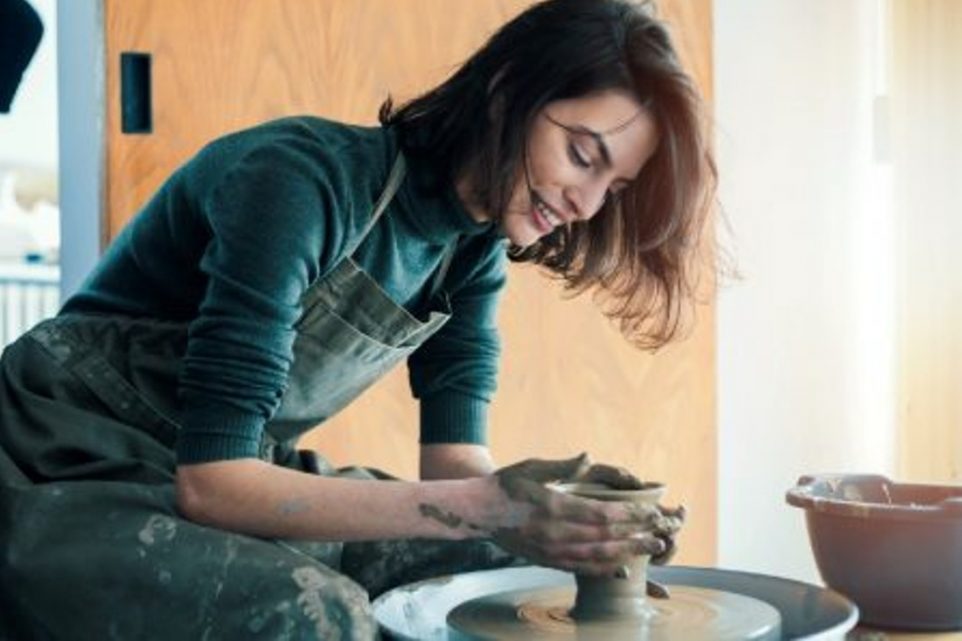Ceramics vs. Pottery: What’s the Difference?

Are ceramics and pottery the same thing? Is there a difference between the two? These are questions that many people have when they first encounter these techniques. While ceramics and pottery can be used to create beautiful and functional art pieces, the two have distinct differences.
In this post, we’ll explain the key differences between ceramics and pottery and how they can be used in your home. We’ll discuss the materials used, the different tools and techniques, and the kinds of items each type of artwork can be used to create. By the end of this article, you’ll better understand the differences between ceramics and pottery and how each can be used to create stunning art pieces.
Definition of Ceramics
Ceramics is a craft that involves creating objects out of clay through heating or firing. It is an ancient practice that has been used since the Neolithic period. Common terms associated with ceramics include glazing, kiln, earthenware, stoneware, porcelain, and raku firing.
Other terms associated with ceramics include ceramic sculpture, casting, hand-building, and wheel throwing. Wheel throwing is the process of shaping clay on a pottery wheel, which allows the artist to create more precise, symmetrical shapes while making pottery or another ceramic object.
Definition of Pottery
Pottery is another craft that involves creating objects out of clay using specialized tools such as a pottery wheel or kiln. Common terms associated with pottery include glazing, wheel throwing, and turning.
Other terms associated with pottery include clay modeling, jiggering and jollying (also known as jiggering and turning), slipcasting (also known as slip-casting), coil and slab building, pit-firing, raku-firing, wood-firing, and saggar-firing.
Similarities Between Ceramics and Pottery
Both ceramics and pottery use clay as their main material for forming objects. The type of clay used can vary depending on the desired properties of an object. Some commonly used clays include earthenware clay (low-fired), stoneware clay (high-fired), porcelain clay (very high-fired), and terracotta clay (low-fired).
The objects created using ceramics or pottery can range from decorative pieces such as vases and sculptures to functional items such as plates and bowls. Both crafts can also be used to create tiles for interior or exterior use and mosaics or murals for decorative purposes.
The processes used to make ceramics or pottery are the same — they involve shaping raw clay into desired forms using tools such as a knife or rolling pin before firing them in a kiln or oven to achieve the desired finish and strength. The main difference between these two crafts is how the pieces are shaped. Wheel throwing is often employed to make precise shapes in ceramics, whereas in pottery more freeform objects are made with hand-building techniques such as coiling or slab building.
Differences Between Ceramics and Pottery
Ceramics and pottery differ in several ways. The main difference lies in the shape of the objects produced. Ceramic pieces are often more precise and symmetrical due to the wheel-throwing technique used to form them. In contrast, pottery pieces are typically more organic-looking because hand-building techniques like coiling or slab building are used to shape them in unique ways.
Additionally, ceramicists and potters use different materials and techniques to create their works. For example, ceramicists often use glazes to give their pieces a glossy finish, while potters use engobes to achieve a matte finish on their works.
The purpose of ceramics and pottery can be functional or decorative, but they are typically used for different purposes. For instance, ceramicists usually focus on creating functional items like plates or mugs, while potters create more decorative works like sculptures or murals. This is because working with clay using hand-building techniques requires more creativity and artistic skill than precision, which is more commonly associated with wheel throwing.
Finally, the temperature ranges used by ceramicists and potters differ. Ceramicists use higher temperatures to ensure the glazes are set properly over time. Potters only need to harden their pieces enough to retain their shape since engobes don’t fuse as effectively as glazes at higher temperatures.
Popular Types of Ceramics and Pottery
Ceramics is a popular type of art made from clay fired in a kiln to create a hardened, durable material. The most common types of ceramics include earthenware (low-fired), stoneware (high-fired), porcelain (very high-fired), and raku (a technique that involves removing pieces from the kiln while they are still glowing). These materials are typically used to create objects such as bowls, plates, tiles, teapots, cups, vases, and even larger sculptural works.
In addition to traditional techniques such as wheel throwing or casting elements separately, modern production techniques have arisen, such as 3D printing components from digital models onto physical ones made from clay. These creations can be fired in high-temperature kilns to achieve highly intricate designs with relative speed.
On the other hand, pottery refers to making objects from clay that is not necessarily fired in a kiln. Popular types of pottery include earthenware, stoneware, terracotta, raku, pit-firing, wood-firing, saggar-firing, and coil-and-slab building. These techniques can be used to create objects like bowls, cups, dishes, plates, jars, sculptures, tiles, mugs, figurines, and even jewelry.
Contemporary artists often incorporate elements from other arts, such as painting, sculpting, and carving, into their pottery creations, giving each piece greater complexity than if it were produced by traditional methods involving wheel throwing alone.
Trusted Insights from Artists
At Art Life Today, our passion for arts and crafts is at the heart of everything we do. We understand that the right tools and materials can make all the difference in your creative projects, so we take our responsibility as reviewers seriously. Our goal is to help you discover the best products that will inspire your creativity and bring your artistic visions to life.